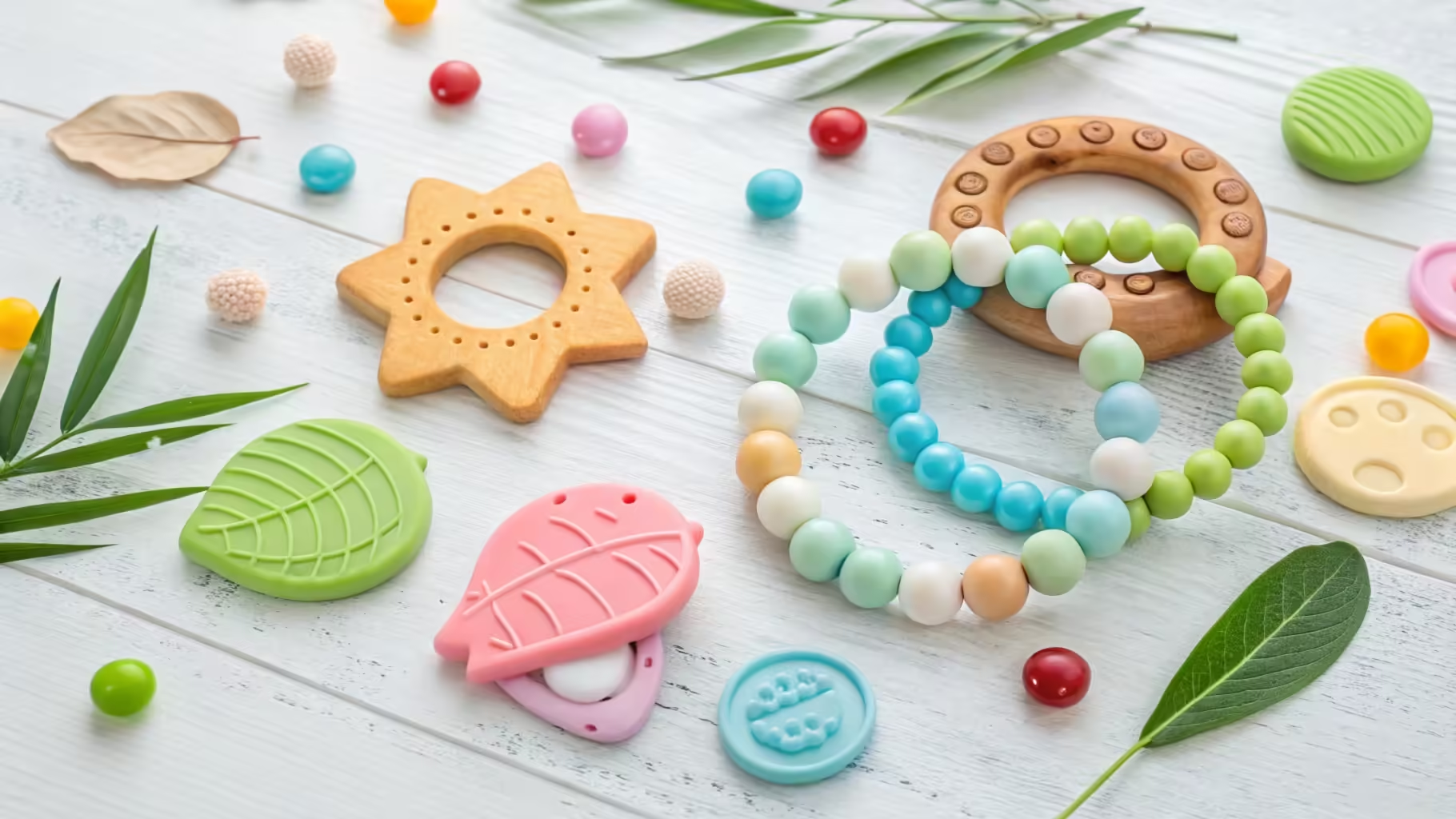
Choosing safe silicone baby teethers is essential for your baby's health. With numerous certifications available, how do you know which ones truly matter?
Understanding key certifications helps you select silicone teethers that are safe, reliable, and meet high-quality standards.
I once bought a teether without checking its certifications, and later discovered it didn't meet all safety standards. Here's what you need to know to avoid such mistakes.
Which certifications are most important for ensuring the safety of silicone teethers?
Ensuring your silicone teether has the right certifications is crucial for your baby's safety.
Key certifications like FDA1, LFGB2, and BPA-free3 labels guarantee that the teether meets stringent safety and quality standards.
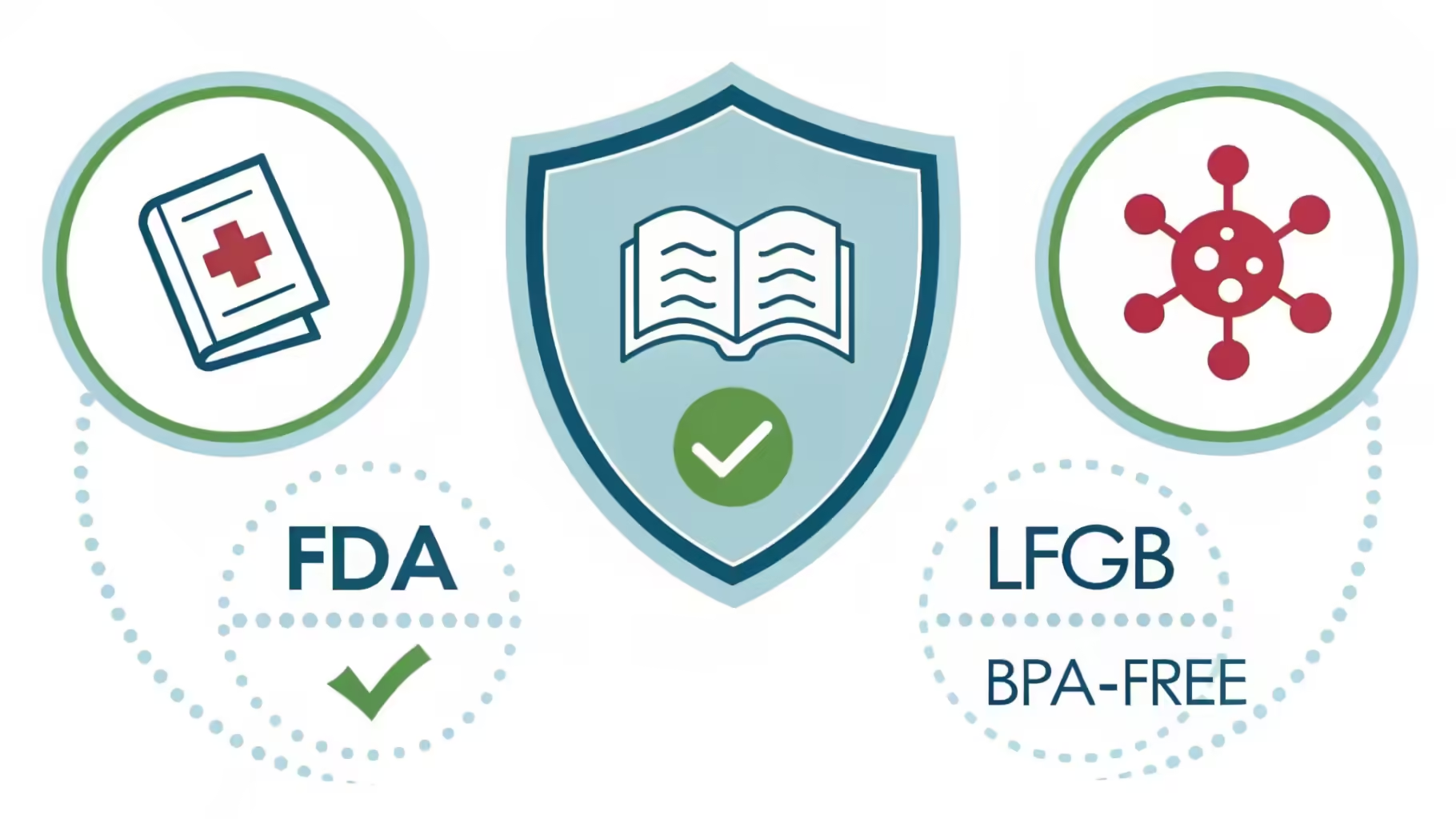
Essential Certifications to Look For
- FDA: Validates that the product is safe for food contact.
- LFGB: German standard ensuring materials are free from harmful substances.
- BPA-Free: Indicates the absence of Bisphenol A, a harmful chemical.
Importance of Certifications
| Certification | What It Ensures |
|---|---|
| FDA | Safety for food contact and non-toxic materials |
| LFGB | Compliance with European safety and health standards |
| BPA-Free | Absence of harmful chemicals like Bisphenol A |
How do FDA and LFGB certifications differ in their requirements for silicone teethers?
Understanding the differences between FDA and LFGB certifications helps in making informed choices.
While both FDA and LFGB certify the safety of silicone materials, they have distinct standards and regional focuses that cater to different markets.
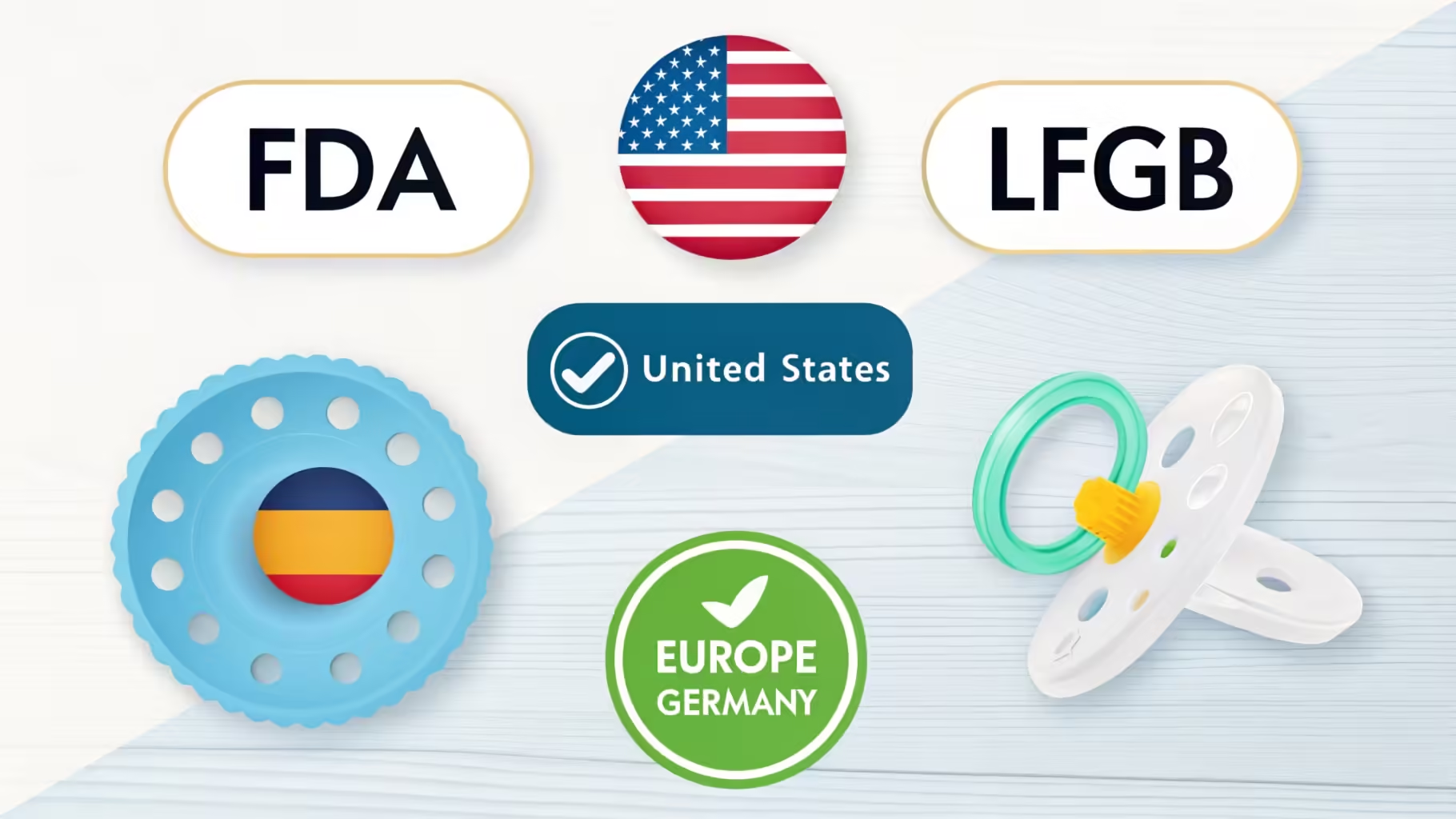
Comparison of FDA and LFGB
-
FDA Certification
- Region: United States
- Focus: Ensures materials are safe for food contact and free from harmful chemicals.
- Testing Standards: Rigorous testing for toxins and material safety.
-
LFGB Certification
- Region: Europe (Germany)
- Focus: Ensures materials are safe for food contact and free from endocrine disruptors.
- Testing Standards: Comprehensive analysis for chemical safety and durability.
Key Differences
| Aspect | FDA Certification | LFGB Certification |
|---|---|---|
| Geographic Scope | Primarily United States | Primarily Europe (Germany) |
| Safety Focus | Food contact safety, non-toxicity | Food contact safety, endocrine disruptors |
| Testing Methods | Extensive chemical and safety testing | Stringent material and chemical testing |
Are there any certifications that are specific to the European market for silicone teethers?
Yes, Europe has specific certifications that ensure silicone teethers meet regional safety standards.
Certifications like LFGBand CE marking4 are essential for selling silicone teethers in the European market, ensuring they comply with local regulations.
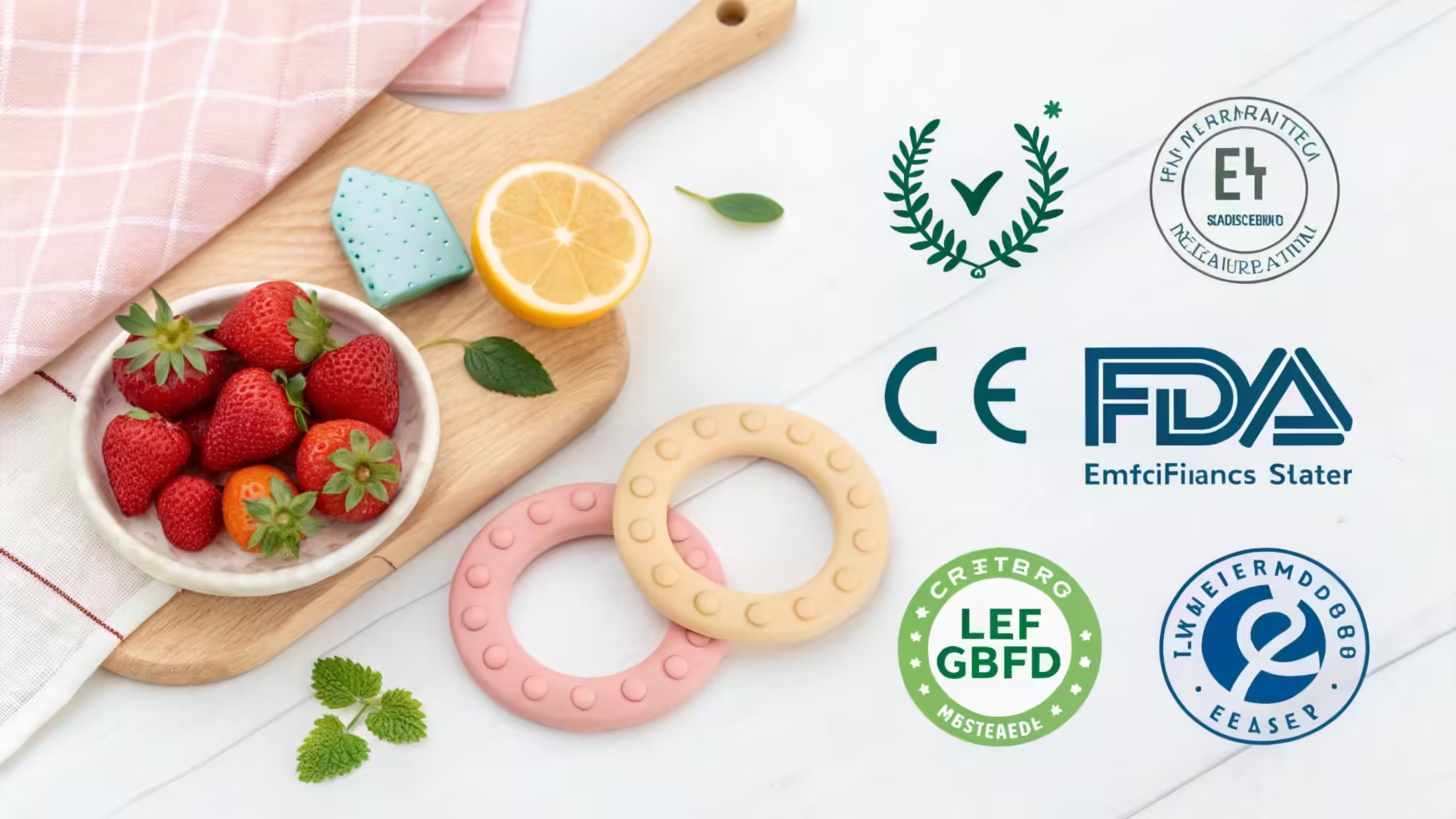
Specific European Certifications
-
LFGB
- Ensures materials are safe for food contact without harmful chemicals.
-
CE Marking
- Indicates compliance with EU safety, health, and environmental protection standards.
Importance of European Certifications
| Certification | Purpose |
|---|---|
| LFGB | Ensures absence of harmful substances |
| CE Marking | Confirms compliance with EU regulations |
What are the benefits of choosing a silicone teether with multiple certifications?
Selecting teethers with multiple certifications provides enhanced safety and reliability.
Multiple certifications ensure comprehensive safety coverage, making the teether trustworthy and suitable for various markets.
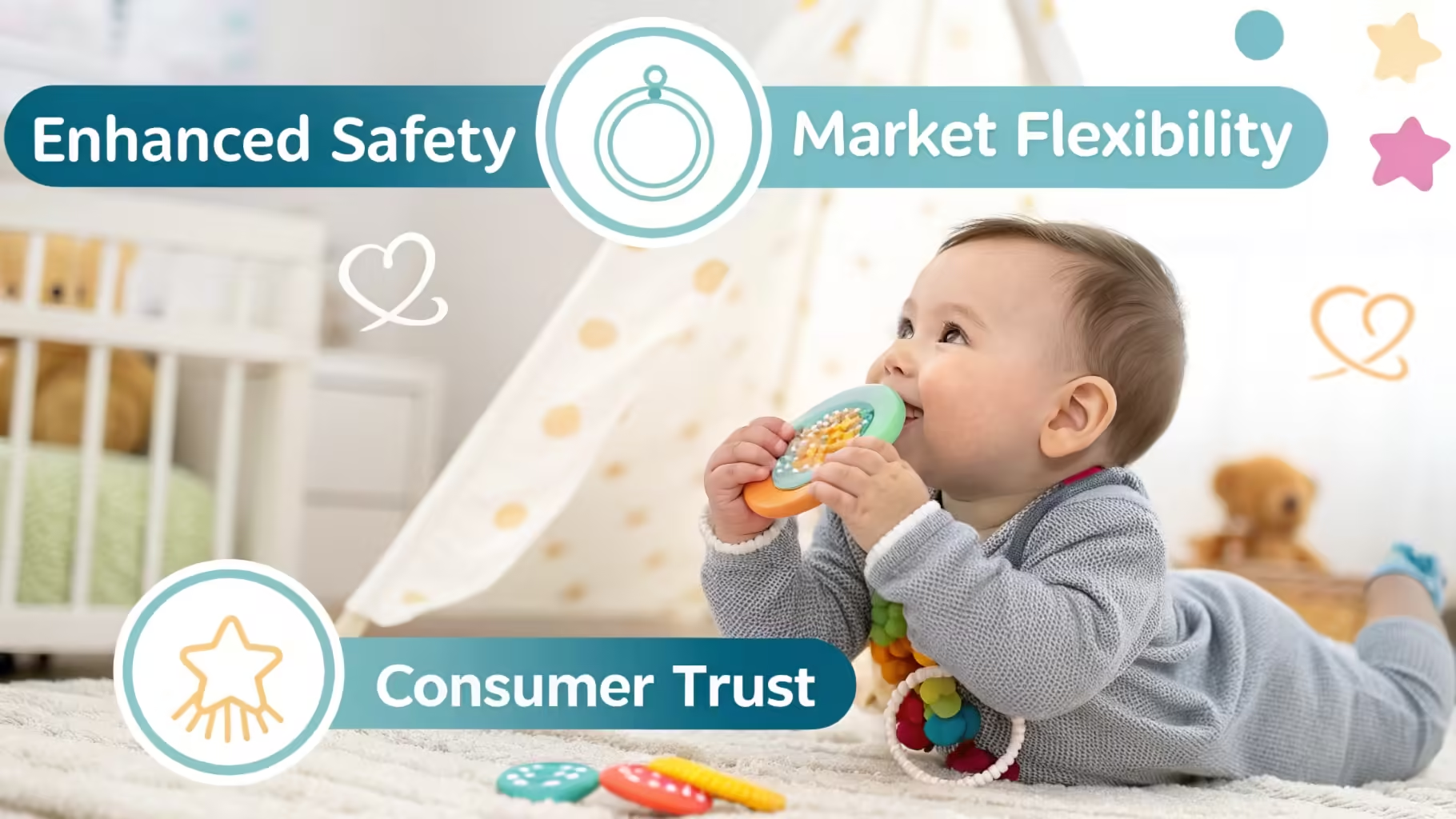
Advantages of Multiple Certifications
- Enhanced Safety: Covers a broader range of safety standards.
- Market Flexibility: Suitable for international sales with different regional requirements.
- Consumer Trust: Builds confidence among parents regarding product safety.
Benefits Breakdown
| Benefit | Description |
|---|---|
| Comprehensive Safety | Meets various safety standards simultaneously |
| Increased Market Access | Easier to sell in multiple regions with different regulations |
| Higher Quality Assurance | Demonstrates commitment to maintaining high safety standards |
How often should manufacturers re-certify their silicone teethers?
Regular re-certification ensures that products continue to meet safety standards over time.
Manufacturers should re-certify their silicone teethers periodically, typically every 2-3 years5, to ensure ongoing compliance and safety.
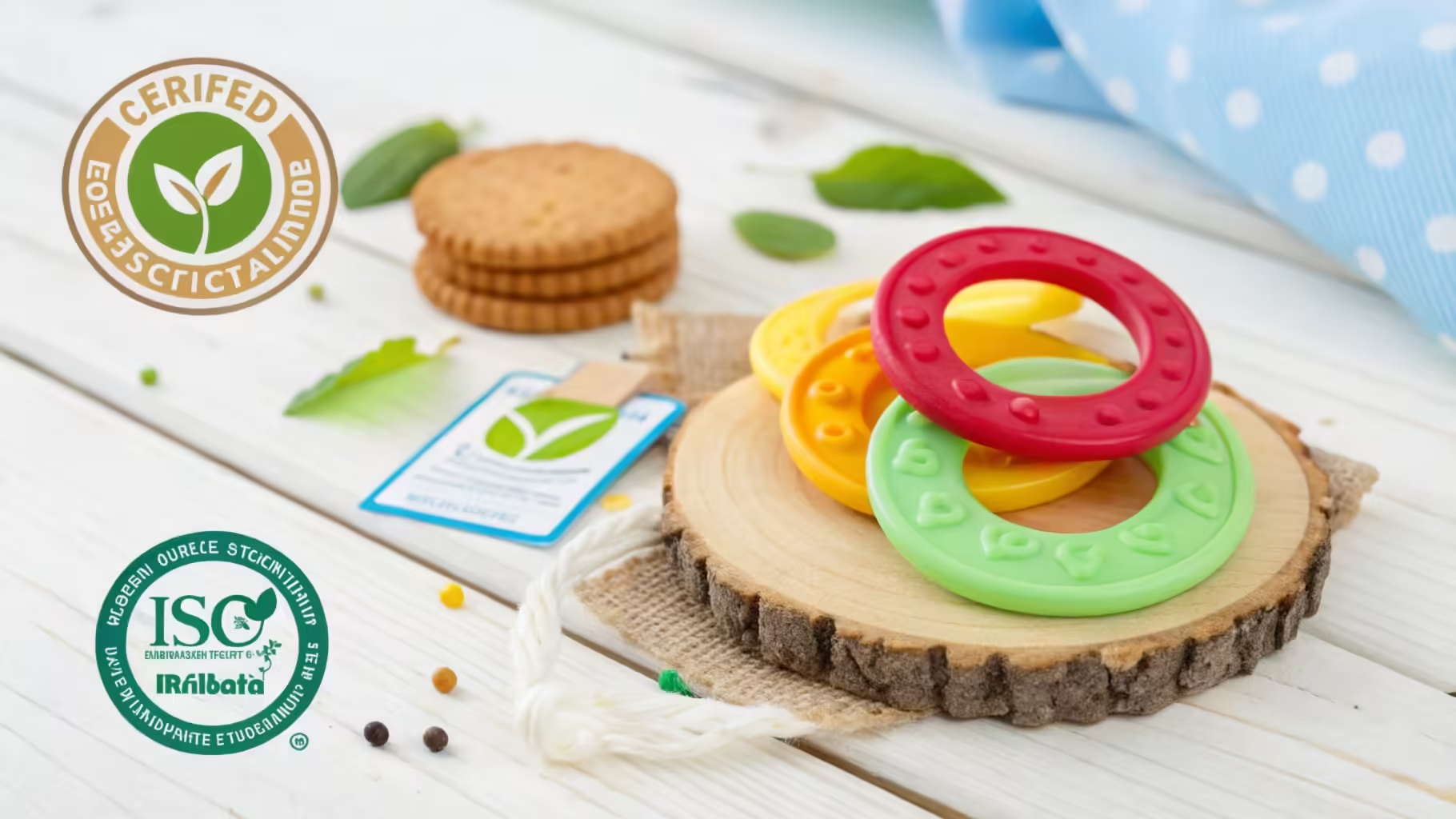
Re-Certification Timeline
- Initial Certification: Upon product development and before market release.
- Periodic Re-Certification: Every 2-3 years to account for any changes in regulations or materials.
- After Major Changes: Whenever there are significant changes in the product design or materials used.
Importance of Regular Re-Certification
| Reason | Explanation |
|---|---|
| Regulatory Updates | Keeps products compliant with new safety standards |
| Quality Control | Ensures consistent product quality and safety |
| Market Trust | Maintains consumer confidence and brand reputation |
Conclusion
Ensuring your silicone teether has the right certifications guarantees safety and quality, providing peace of mind for your baby's teething journey.
-
This resource provides detailed information about the most important certifications (FDA, LFGB, BPA-free) for silicone teethers, helping parents make informed decisions about their baby's safety. ↩
-
This link explains the differences between FDA and LFGB certifications, including their regional focuses and testing standards, helping you understand which certification is more relevant for your region. ↩
-
This resource explains the meaning of BPA-free and its importance for silicone teethers, ensuring parents understand why avoiding harmful chemicals like Bisphenol A is critical for their baby's safety. standards for silicone teethers sold in Europe. ↩
-
This link explains the benefits of choosing silicone teethers with multiple certifications, including enhanced safety, market flexibility, and increased consumer trust. ↩
-
This resource provides information on the re-certification timeline for silicone teethers, ensuring ongoing compliance with safety standards and maintaining product quality. ↩
